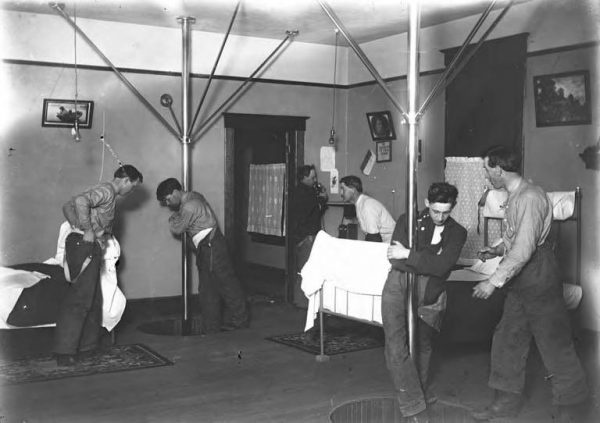Fighting Fires with Poles by Lasha Madan
The fire pole as an object is an iconic symbol of the firefighting profession, but the actual use of the pole has kind of become a thing of the past. If you learned about firefighters as a kid, from your parents or teachers or even a storybook, you were probably told about the pole, because at one time it was in nearly every fire station. And once upon a time, it really did help firefighters get to active fires faster.
Most firehouses of the 1800s were three stories high. Fire horses were stabled on the first floor, with sleeping and eating quarters on the second floor, and hay storage on the third. It worked pretty well, except the horses would often follow the smell of food and try to climb up the stairs. Horses can make it up a set of stairs just fine, but when it comes to going down stairs, they would sometimes get stuck. Replacing more generous stairwells with tight spiral staircases helped alleviate this problem, but also slowed down firefighters trying to get down. One day, a Chicago firefighter grabbed a pole used to load hay into the loft, and slid down that way instead, beating his colleagues to the horses.
So the firehouse in question, Engine 21, installed a permanent pole. At first, they were the butt of jokes from other firefighters. Eventually, though, these poles spread around the world. But of course, they have issues of their own: people can stumble and fall down the holes, or get going too fast and injure themselves when they land. These days, with trucks instead of horses, and ever more single-story stations, the need for such poles has diminished. Sometimes, one is still included in a new station design, but generally not so much as a functional object but rather a long-standing symbol of the profession.




Comments (4)
Share
Love this section. They sort of remind me of being a kid in the back seat of my dad’s car and him talking about this building or that mountain on road trips.
Also, as someone who loves to ride, it ties in to one of my favorite things about cycling and the (little bit) of bike touring I’ve done. That you’re seeing the world around you as you ride, and there’s all these interesting little places you’d blow by on an interstate but that on a bike you might stop in and see more closely (come to think of it, there may be a future 99 PI episode in bike touring somewhere).
Hi there, the Australian series of the TDF also had a regular section by an by French/Australian chef on the region’s dishes Germaine to that locality. Love the show(s)
I love this part of the Tour. In Australia we have an added element to the local broadcast where we have a French Chef that highlights the regions famous food s and cooks a local dish just before the broadcast. Due to the time difference in Australia it helps to entertain the viewers.
Always love this aspect of the Tour coverage. The other oddity in this coverage is the periodic references to the coffees and snacks that the announcers are eating. It is, after all multi hours of commentary, they need some sustenance ;-). It seems that advertising and promo has always been embedded in the race – the man who started it, henri DesGrange, was the editor of L’Auto (now L’equipe) and it was originally a scheme to fuel sales of the daily paper. I seem to recall reading that tourism quickly became a piece of the puzzle for the organizers even in the earliest years… clearly it continues through today. I suspect it is also part of the reason why the first leg of the Tour is always in another country now. Legs 1-3 are in Denmark in 2022.